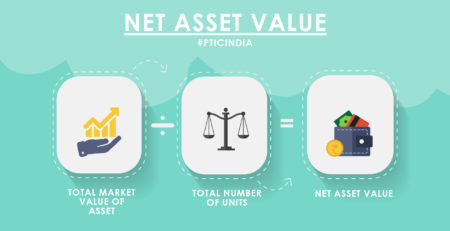In India, old age, retirement, and pension are terms that are used almost interchangeably. Hence, it should not come as a surprise that for retirement planning, the conveniently named pension plans offered by insurance companies are hot favorites. In fact, most retirement planners choose these products simply on the basis of their limited understanding of how these products work. The truth is mutual funds have historically outperformed pension plans in the long term. And retirement is a long-term savings goal is perfectly aligned with the investment objectives of mutual fund schemes. Of course, to do this correctly, you do need to understand how retirement products actually work.
Retirement Planning Phase 1: Accumulation:
The entire process of retirement planning divided into 3 separate phases – accumulation, preservation, and distribution. The accumulation phase should ideally start from your first day of employment or rather your first paycheck. Early in life, you will tend to have fewer monetary responsibilities. Hence you could theoretically opt for a complete equity portfolio comprising potentially high return equity investments. By doing this you can maximize your chances of growing your savings faster over time. But, in case that exceeds your risk appetite, you could easily opt for a mix of equities and equity-oriented hybrid schemes.
Alternately you could implement a mix of equities and low volatility debt investments. In order to create an optimal balance between return, liquidity, and risk. The investment style of choice for many including novice investors should be through SIP investments made into 4 to 5 mutual fund schemes at a time but preferably not more than that.
Retirement Planning Phase 2: Preservation:
The second phase known as preservation. Here you ensure that whatever wealth you have created during the accrual phase can be preserved effectively for later. And this occurs relatively close to retirement. The suggested way to do this is to start moving your existing equity/equity-oriented investments into potentially lower volatility debt schemes. But ideally, this should not do in the form of a lump sum. Instead, you should opt for an STP i.e. a systematic transfer plan, which redeems a portion of your current equity investments periodically and moves them to a debt scheme of your choice.
By combining SIP investments with STP transfers, you ensure that you receive the benefit of rupee cost averaging both at the time of investing and withdrawal.
Retirement Planning Phase 3: Distribution:
The third phase known as distribution often occurs concurrently with the preservation phase of retirement. Because on the one hand, your redemption of investments is ongoing. While simultaneously you are moving other investments from potentially high volatility instruments to low volatility ones. In most cases, retirees tend to opt for mutual fund dividend plans in the hope of securing a consistent income while staying invested in the scheme.
However, this is usually not a good idea due to the applicability of DDT (dividend distribution tax). Which eats into your potential returns and does not guarantee a consistent income from your investment. Hence it is usually a better idea to opt for a systematic withdrawal plan. It ensures you consistent cash over time without worry about market conditions or fund management decisions that could impact your income.
Mutual Fund Retirement Funds – Simplifying Retirement Savings:
The above method of using different mutual fund schemes to invest & grow. And at a later date ensure an income during your golden years. It might seem a bit complicated especially if you are a novice investor. In fact, many seasoned investors might find it difficult to keep up with the required changes. These are crucial for ensuring successful funding of your retirement through mutual funds. Thankfully, there is an easier way to achieve the same result with less worry – mutual fund retirement plans.
Mutual fund retirement plans are either hybrid schemes that invest in both equity and debt instruments or they are multi-cap schemes capable of providing high long-term growth to the amount invested. This ensures that your investments receive the dual benefit of optimal returns with balanced levels of volatility and overall risk to the principal invested.
You can make your investments using a single SIP; instead of having to run multiple SIP investments at the same time. It ensures better tracking of your investments and their performance over time. Even better, most of these schemes do not feature an exit load. So you are free to move your underperforming investments into better performing schemes as and when required.
The process of investing for retirement would ideally feature the same cycle of accumulation, preservation, and distribution. It is with the option of periodic portfolio rebalancing in case your chosen scheme is not performing according to your expectations.
Mutual fund investments work best if you let your money grow over time. And this is what mutual fund retirement plans or pension plans allow you to do. As a result, the potential of creating a larger investment corpus using mutual funds is significantly higher as compared to the chances of creating an equally large corpus using the traditional insurance company pension schemes.










